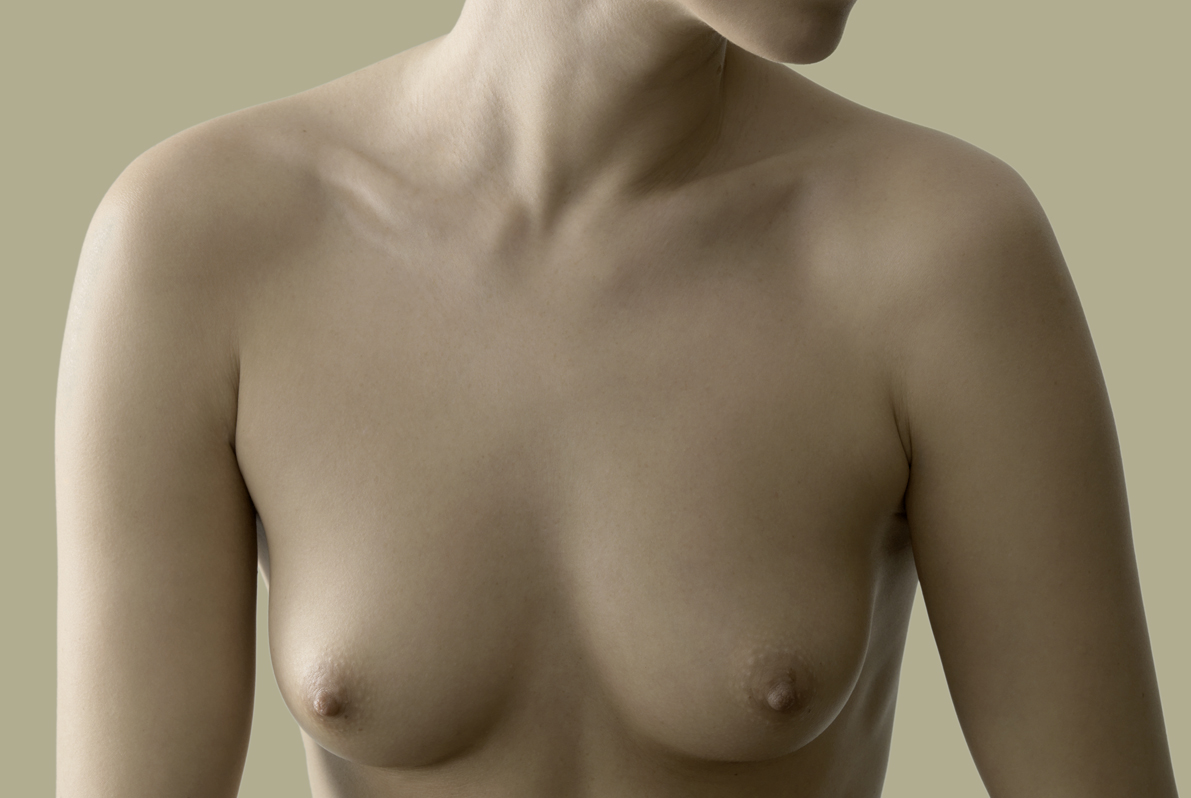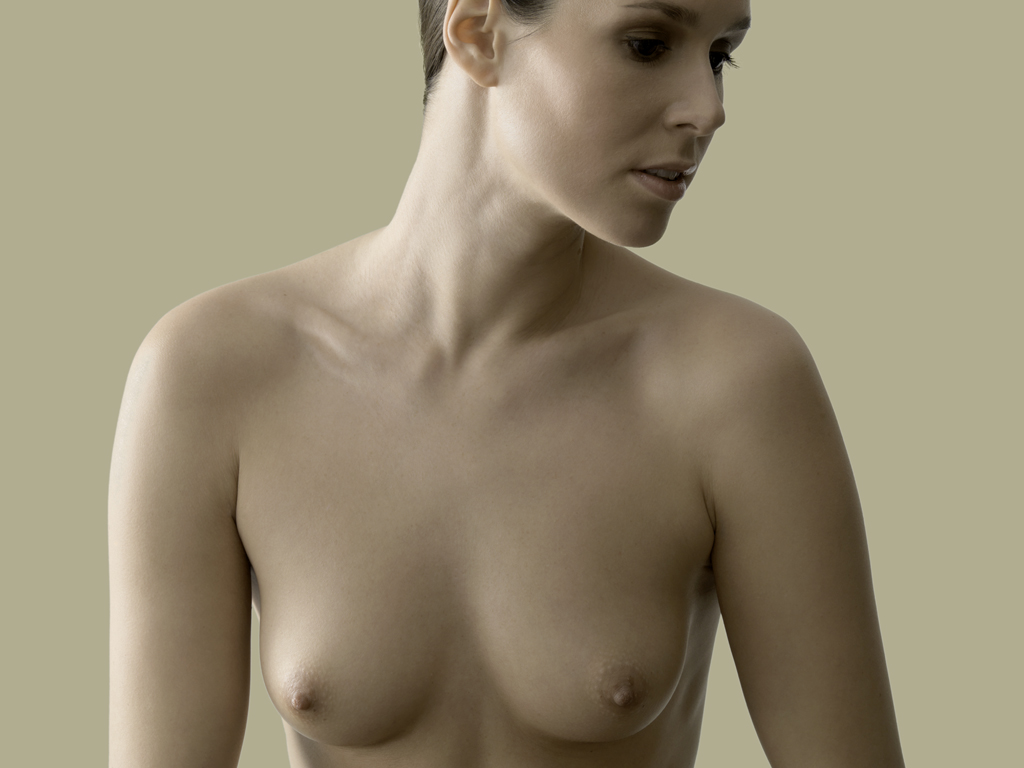
In breast reduction surgery, the breasts are reduced and tightened at the same time. Women who undergo breast reduction surgery frequently suffer from physical ailments that can be caused or aggravated by the weight of heavy breasts. A breast reduction can help to eliminate these symptoms and to improve the size and shape of breasts. A breast reduction will also help to adjust the breast to be in proportion with the rest of the body, improving the fit of clothing and making the purchase of clothing easier.
Considerations
When to consider Mammaplasty:
- Your breasts are heavy and sagging with nipples facing downward.
- One breast is noticeably larger than the other.
- You suffer from neck, shoulder or back pain that is caused or exacerbated by the weight of heavy breasts.
- You suffer from skin irritation or inflammation in the fold beneath your breasts.
- The straps of your bras cause deep grooves in your shoulders due to the weight of your breasts.
- The size of your breasts limits your physical and sporting activities.
- You feel your breasts are proportionally too large in relation to the rest of your body.
- Your self-esteem and wellbeing are affected by the size of your breasts.
A breast reduction can be performed at any age, but it is recommended to wait until breast growth is complete. Pregnancy and breastfeeding can have an unpredictable effect on breast size and shape, thus it is advisable to wait until after childbirth and breastfeeding before surgery is performed. Nevertheless many women decide to have a breast reduction before childbirth. It is important to note that in many cases breast surgery does not hinder the ability to breastfeed your baby. A further reduction can also be performed if your breasts increase in size after pregnancy and childbirth. In many cases physical symptoms, such as neck, shoulder and back pain and sometimes migraine symptoms can be eliminated, or improved, by having a breast reduction. Self-esteem and an overall feeling of wellbeing can also be improved by a breast reduction.
Consultation
A prerequisite to a successful operation is careful planning. This starts with a personal consultation at the AARE KLINIK.
- Communication of wishes and expectations ascertain what you would like to improve.
- Explanation of the possibilities and scope of the operation.
Examination:
- Medical history is taken.
- Physical examination is performed.
- Digital photos are taken.
- Desired breast size and shape are discussed as well as the position and size of the nipples.
- Pre-existing asymmetry in the breasts or chest, skin quality and existing scars are examined.
- Individual factors and personal wishes help in jointly deciding the right breast size and choice of appropriate surgical technique, the position of incisions and resulting scars.
- Based on this an individual treatment plan is drawn up and goals of the operation are discussed and defined.
- Risks and possible complications are discussed and documented.
To plan the operation and to make a risk assessment we require:
- Full medical history (pre-existing conditions and previous surgery).
- Current diseases (high blood pressure, diabetes, thyroid dysfunction, etc.).
- Allergies or aversion to medications.
- Any important medical reports.
- Please bring any important medical information (in particular anything relating to your breasts, e.g. mammography) along to the consultation and inform the surgeon if you have a history of breast cancer in your family.
- If you are planning to lose a significant amount of weight or to get pregnant, this should be considered when planning a breast reduction as the size of your breasts can alter unpredictably through weight fluctuation, pregnancy or breastfeeding.
- It may be advisable to wait for the stabilisation of your weight or after pregnancy/breast feeding before surgery is undertaken.
- Depending on your age, personal and familial risk factors, it may be advisable to have a breast sonography (ultrasound), mammography (breast X-ray) or MRI (magnetic resonance imaging) before having a breast reduction.
Procedure
Every breast reduction involves removing varying amounts of skin, fat and glandular tissue from the lower areas of the breast. The nipple is raised and the areola is reduced in proportion to the new breast size. The nipples remains connected with the glandular tissue and both are lifted upward. The remaining connection to the glandular tissue allows the preservation of nerves and vessels that supply the nipples, thereby ensuring adequate blood circulation and feeling in the nipple. The breast is reshaped with the remaining breast tissue and reduced according to your wishes. Excess fat, especially on the sides, can also be removed with liposuction to improve the contour under the arm. In many cases the ability to breastfeed is retained after a breast reduction, but in individual cases can’t be guaranteed.
Although there are a variety of different surgical techniques for reducing the size of a woman’s breasts, they cannot all be listed here. The most visible distinguishing difference for the patient is the position of the incisions and the shape of the resulting scars. Breast reduction surgery can be divided into 4 groups:
Breast reduction with T-shaped scar
- The most common form of breast reduction.
- Involves three incisions: a circular incision around the areola, a perpendicular one running from the underside of the areola to the fold under the breast (inframammary fold), and one that follows the fold to the inner and outer aspect of the breast.
- This technique is suitable for breasts of any size.
Breast reduction with L or J-shaped scar
- The incision is similar to the T-shaped scar.
- However, the vertical incision is extended in one direction of the inframammary fold only, mostly extended outwardly.
- Less skin can be removed, which is why the technique is mainly used in medium and smaller-sized breasts.
Breast reduction with I-shaped (vertical) scar
- This technique has no incision in the inframammary fold.
- There remains an excess of skin above the fold on the lower aspect of the breast, which has to regress spontaneously.
- This technique is only used in women with elastic skin and predominantly for medium and smaller breast size.
Breast reduction with O-shaped (periareolar) scar
- The incision is limited to the outer circumference of the areola.
- This technique does not have a vertical incision between the areola and submammary fold nor a transverse incision in the fold and is the shortest scar possible in breast reduction.
- Because only limited skin can be removed through this technique, it is used in breast lifts (mastopexy) and minor reductions where only a small amount of skin tightening is necessary.
Breast reduction is usually performed under general anaesthesia as an outpatient procedure or with an over-night stay at the AARE KLINIK or as part of a short hospital stay. The surgery usually takes 3–4 hours. Drains are frequently inserted to evacuate blood and wound fluid after the operation. These are removed after a few days.
Risks
Breast reduction is one of the procedures most frequently performed by plastic surgeons. Complications, such as infection, healing problems or circulation disorders of the breast tissue (e.g. loss of nipple) are rare when conducted with the proper techniques and care. However, in individual cases a longer treatment or another operation may be required. Every patient should be informed of all the benefits, risks and possible complications involved.
The lighter complications that usually heal without consequences include bruising (hematoma), wound fluid accumulation (seroma) and swelling. Severe bruising can make surgical removal necessary. Numbness of the breast skin and nipples are uncommon, but are usually only temporary if they do occur.
General risks
- Haematoma (bruising), bleeding and swelling
- Seroma (accumulation of wound fluid)
- Healing problems or infection
- Wound breakdown/dehiscence (separation of wound edges)
- Injury of nerves or vessels
- Numbness in area of operation (temporary or permanent)
- Circulatory problem of breast skin or nipple (skin slough)
- Scars
- Slight asymmetry
- Unsatisfactory aesthetic result
- Secondary surgery
- Thrombosis or embolism
Overall a breast reduction is a safe procedure when undertaken by an experienced plastic surgeon and patients are mostly satisfied with the results. You can help to minimise the risks by following the advice of your surgeon.
Preparation
Our aim is to make the time before and after your surgery as comfortable as possible. By following a few recommendations you can support our care:
- To aid the healing process, avoid smoking for two weeks before and after the operation.
- Avoid medication that increases the risk of bleeding, like aspirin, non-steroidal anti-inflammatory drugs, as well as vitamins and homeopathic remedies for two weeks prior to the operation.
- Depending on your age and additional risk factors, a mammography (breast x-ray), sonography (ultrasound) or MRI (magnetic resonance imaging) is sometimes recommended before a breast reduction and possibly a few months after the procedure.
- This can be helpful to detect abnormal breast tissue before (that can be removed during the operation) and after the operation.
- A breast reduction will not increase the risk of developing breast cancer.
- Even after a breast reduction, mammography, sonography or MRI can be undertaken.
- Breast reduction is mostly performed as an outpatient procedure under general anaesthesia.
- Make sure that you can be collected and cared for by someone for 24 hours after the procedure.
- In some cases it may be recommended to stay overnight as an inpatient in hospital.
Day of surgery
In most cases, breast reduction surgery is performed under general anaesthesia as an outpatient procedure or with an over-night stay at the AARE KLINIK. In individual cases, when necessary, the procedure can be undertaken in an affiliated private hospital.
- During surgery you will receive various medications for your wellbeing.
- Usually breast reductions are performed under general anaesthesia.
- For your safety, your heart rate, blood pressure, oxygen supply etc. are monitored during the operation.
- At the end of surgery, drains are usually inserted to prevent the accumulation of blood and serous fluid in the wound.
- After surgery, the wound is dressed and a special compression bra is applied
- You will be taken to the recovery room, where you will have continued monitoring until you awaken and are able to get up.
- You will be allowed to return home after a few hours.
- If you are an inpatient, you will remain in the recovery ward under surveillance until the following day.
- Already on the day of the surgery you should get up regularly for a few minutes in order to minimise the risk of thrombosis.
- The level of pain after a breast reduction is not severe and can be compared with muscular pain.
- You are advised to take mild pain relief that reduces swelling and should be continued for several days after surgery.
- In case of an ambulatory procedure, you should have someone to care for you continuously for 24 hours postoperative.
- We also provide the option of an over-night inpatient stay at the AARE KLINIK in a single room with a personal nurse care, if needed.
After surgery
- It is important to realise that recovery from an operation varies for every individual.
- In the first days after the breast reduction, you should rest. Do not raise your arms above shoulder height, and do not lift heavy objects.
- As a rule, you need to sleep on your back for a few days.
- Only take the prescribed painkillers and avoid any medication that contains aspirin or other blood-thinning substances.
- Wear the special compression bra and adjust it continuously over a total period of 4–6 weeks as per our recommendations.
- Physically demanding and sporting activities should be avoided for several weeks.
- In the first 2–5 days after the procedure, a feeling of tension and light pain will be felt in the region of the surgery.
- Breast skin and nipples may feel numb or hypersensitive in the beginning. This is usually temporary.
- However, it may take weeks or months, in some cases even longer until sensation returns to normal.
- Slight swelling and bruising in the area of the breast usually subsides within 2–3 weeks.
- Typically you will be back on your feet a couple of days after surgery and be able to resume your daily activities.
- Drains are removed in the first days after the operation, after which you can take showers again.
- Full baths and excessive heat (e.g. sauna), however should be avoided for several weeks until swelling has receded.
- Most stitches will dissolve by themselves and do not need to be removed.
- Non-dissolvable stitches are removed after one week.
- You will probably be able to start work again one week after surgery depending on the kind of breast reduction and the kind of activities required in your job.
- After removal of the sutures, we recommend the start of an intensive skin and scar care with rehydrating creams and light massage.
- In individual cases it may be useful to have special treatment with silicone gel or silicone pads over a period of 2–3 months.
- The fresh scars should be protected from UV radiation for at least six months, in order to prevent increased pigmentation.
- After surgery you will be examined at the AARE KLINIK at regular intervals, so that the healing process can be assessed until the final result is achieved.
Outcome
- Your breasts may be swollen for some time after surgery. It may take several weeks until they have assumed their normal shape.
- The healing process is gradual and it takes several months before the operation result can be conclusively determined.
- Scars might be a bit red for several months or appear pigmented, but this will fade with time until the scars and are barely visible.
- Scars are easy to conceal even when wearing revealing clothing.
- A breast reduction results in firmer breasts with an improved shape.
- A breast reduction can dramatically change your appearance making you look slimmer. It may take a while until you become accustomed to your new appearance.
- Without the weight of heavy breasts, physical activity and sports are easier and more enjoyable.
- After a breast reduction, women often feel more self-confident and find it easier to wear certain clothes.
- The satisfaction rate of patients after a breast reduction ranks among the highest of all plastic surgery procedures.
- The result of a breast reduction is usually long lasting. However, gravity and the aging process continue to affect the breasts of every woman, gradually changing their shape and size over time.
- Weight fluctuations, pregnancy and lifestyle can also affect the outcome.
- If you are unhappy with the shape of your breasts after a few years, another breast lift can be performed.
Costs
A breast reduction can relieve functional symptoms of carrying extra weight as well as improve the appearance and the psychological wellbeing of a patient. Thus the procedure can be medically and/or aesthetically motivated. In some cases the costs of a medically indicatec breast reduction are covered by health insurance. If, however, it is a purely aesthetic procedure, then the patient herself must carry the costs herself. Whether a breast reduction is regarded as being medically indicated is unfortunately subject to not uniform and transparent criteria.
Prerequisites for a medically indicated breast reduction are a normal body weight, an expected reduction in breast weight of more than 500 grams per breast and demonstrably failed conservative treatment trials, including long-term physical therapy.
The decision for or against reimbursement depends on the recommendation of the medical officer in each individual case.
The costs of an aesthetically motivated breast reduction are variable and mainly depend on the complexity of the operation and the facility in which the surgery is performed (hospital or AARE KLINIK). A more accurate cost estimate can therefore be made only after a personal consultation.
The costs are composed of:
- Surgical fee (including consultation and post-operative care)
- Anaesthesia fee
- Technical infrastructure costs (AARE KLINIK/hospital)
- Inpatient hospital costs
- Compression bra
- Medication
- Diagnostics (laboratory, ECG, scans, etc.)
Appointment for a breast-reduction with Dr. Scheufler in Bern
Before any breast surgery you should have a comprehensive consultation and additional examination. Only in this way can you be sure whether the type of surgery will lead to the result you expect. In addition, your consultation will give you a good impression of our experience in the field of breast surgery. Feel free to ask for before and after photos to get an idea of what the results look like.

Dr. med. O. Scheufler, specialist in plastic, reconstructive and aesthetic medicine and author of this website, is pleased to be at your service for a personal consultation. Besides his main work at the Aare Clinic, PD. Dr. Scheufler is also scientifically active and has habilitated at the University Hospital of Basel. He was therefore awarded the title of assistant professor by the University of Basel. In addition, he was honored by Duke University (USA) as a Visiting Professor. So do not hesitate to contact him if you wish a professional consultation!



